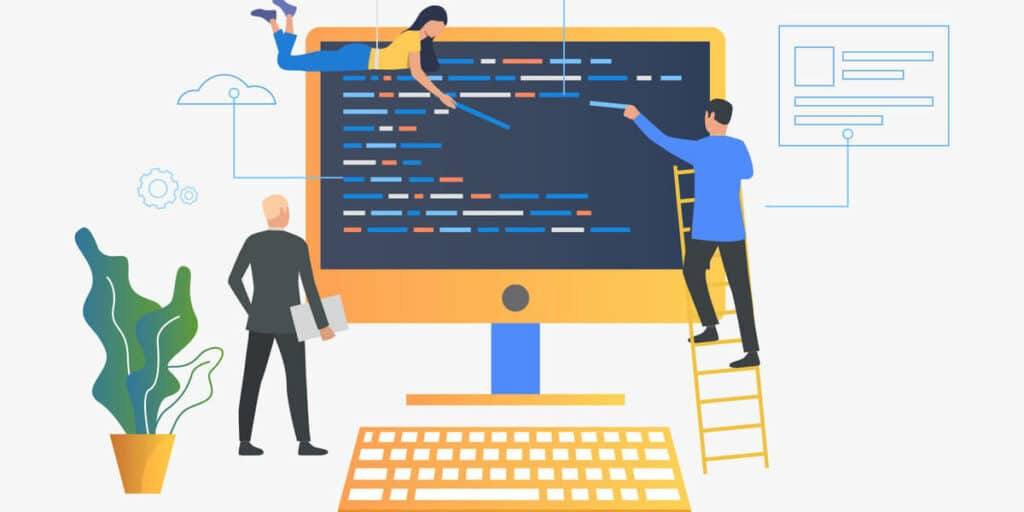
GPT-4o: The AI Model Just Officially Released
15 June 2024
Top Data Science Trends and Strategies Shaping the Future of Analytics
10 October 2025
Traditionally, software development has been reserved for the select few that had spent years learning the art of writing code. Recently, however, this art is being democratized through advancements in low-code and no-code platforms, which have empowered even users with limited or no prior programming experience to create functional applications. The sea change is now affecting how companies approach app development: more accessible, efficient, and cost-effective.
The article goes deep into low-code and no-code to explore what they bring to the table, their benefits, limitations, and what the future holds as regards software development.
What is Low-Code?
Low-code development is a form of software development that tries to simplify application development by reducing the amount of time spent writing code. In place of complex programming languages, developers build applications using visual interfaces, drag-and-drop components, and basic logic. The approach serves professional developers seeking to drive additional speed in their work processes and non-developers who want to create functional apps with as little coding as possible.
Basic characteristics of low-code platforms include the following:
Visual Development with Customization: Drag-and-drop interfaces with pre-built components make quick work, while coding options can be used by developers to address advanced or unique requirements.
Flexibility: Professional developers can add custom scripts or modules to extend functionality.
Scalability: Enterprise-class platforms that handle high enterprise-class applications requiring complex data processing
Governance and Security: Native tools ensure applications are meeting IT governance, security, and compliance standards.

What is No-Code?
No-code platforms go further, requiring no knowledge of coding at all. Using purely visual development interfaces, they allow non-technical users to create applications by dragging and dropping software components. While simplicity and ease of use are the top priorities of no-code platforms in general, they are best fitted for smaller projects or those from a departmental level that have very limited requirements for customization. Key features of no-code platforms include:
- Purely Visual Development: Intuitive interfaces that enable users to compose applications without writing code.
- Limited Customization: Constrained flexibility because of predefined architectures and components.
- Simplified Use Cases: Perfect for building simple applications with clearly defined, narrow objectives.
Low-Code Versus No-Code Platforms
Although both low-code and no-code platforms were created with the same purpose of easing the process of developing an application, they have different target markets and project needs:
Customization: It is possible in low-code platforms, which provide much room for developers to include custom-written code for more advanced functionalities. No-code solutions are less adaptable. Target Audience: Low-code is designed to be suitable both for professional developers and “citizen developers,” while no-code targets only the non-technical audience. Scalability: Low-code platforms are generally more robust and will be able to handle larger, enterprise-level projects, whereas no-code platforms are best for smaller-scale applications. Benefits of Low-Code/No-Code Platforms
The increased usage of low-code/no-code platforms testifies to their ease of advantages:
- Ease of Use: Simplified development processes enable users to focus on meeting business requirements without extensive technical expertise.
- Accelerated Development: Pre-built components and visual tools allow users to create applications much faster than traditional methods.
- Cost Efficiency: Reduced development time and maintenance complexity lead to significant cost savings.
- Smarter Automation: Workflows and integrations with other systems are better automated, thus improving efficiency.
- Greater Flexibility: Faster adaptation to changing needs or compliance requirements.
- Larger Pool of Developers: Non-technical resources can also develop applications, hence increasing the talent pool.
- Better Customer Experience: Updates are quicker, and solutions are more tailored to the needs of users.
- More Privacy and Security: Sensitive development tasks can be kept in-house, reducing vulnerabilities to third-party risks.
Limitations of Low-Code/No-Code Platforms
Despite their benefits, low-code and no-code platforms have certain drawbacks:
- Reduced Flexibility: Built-in functionalities may not meet all customization needs, especially for complex projects.
- Security Risks: Reliance on platform providers for updates and security measures can expose applications to vulnerabilities.
- Vendor Lock-In: Switching platforms can be challenging due to dependency on proprietary tools and architectures.
- Scalability Constraints: No-code platforms, in particular, may struggle to support large-scale or high-performance applications.

The Future of Low-Code/No-Code Development
This growth has resulted from the growing demands for quicker, more accessible development. Indeed, Gartner estimated that by 2023, the LCNC market will be worth $26.9 billion, while Forrester projects that the market will exceed $45.5 billion by 2025. Moreover, in 2024 alone, 65% of all activities regarding application development will adopt low-code methods. The key trends to probably influence the future of the LCNC platforms will be:
- Increased Adoption: Large organizations are implementing LCNC tools across multiple projects, and 75% of those plan to have at least four low-code tools in use by 2025.
- Revenue Growth: Businesses leveraging LCNC platforms have reported faster development cycles along with significant revenue increases.
- Advanced Features: Newer platforms integrate AI, machine learning, and real-time analytics to further augment capabilities.
Low-code and no-code platforms have brought more ease, efficiency, and inclusion into software development. Their limitations notwithstanding, the advantages outweigh the disadvantages for a large number of use cases, enabling businesses to be more innovative and adaptive to a competitive market. And it will be expected that they become even more important when the technologies evolve to shape the future in the area of app development, bridging the chasm between technical and non-technical users.


